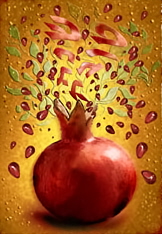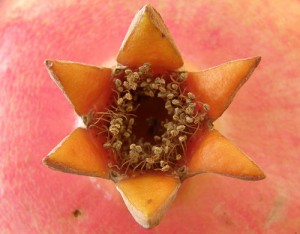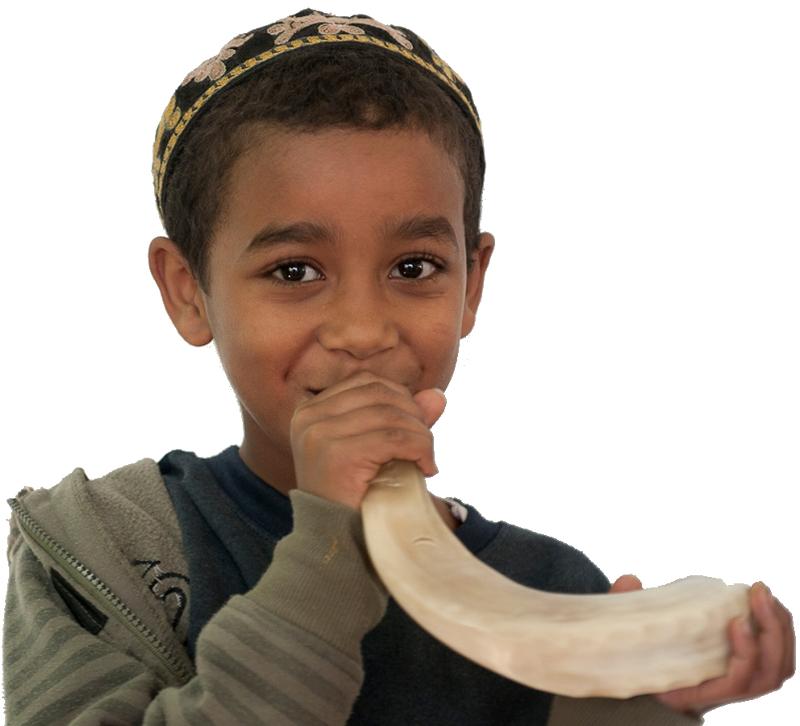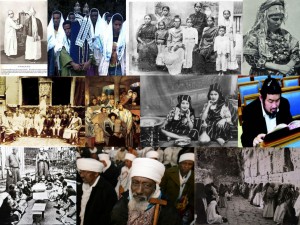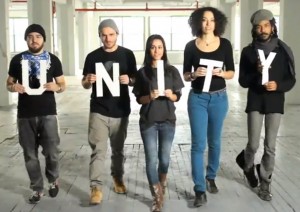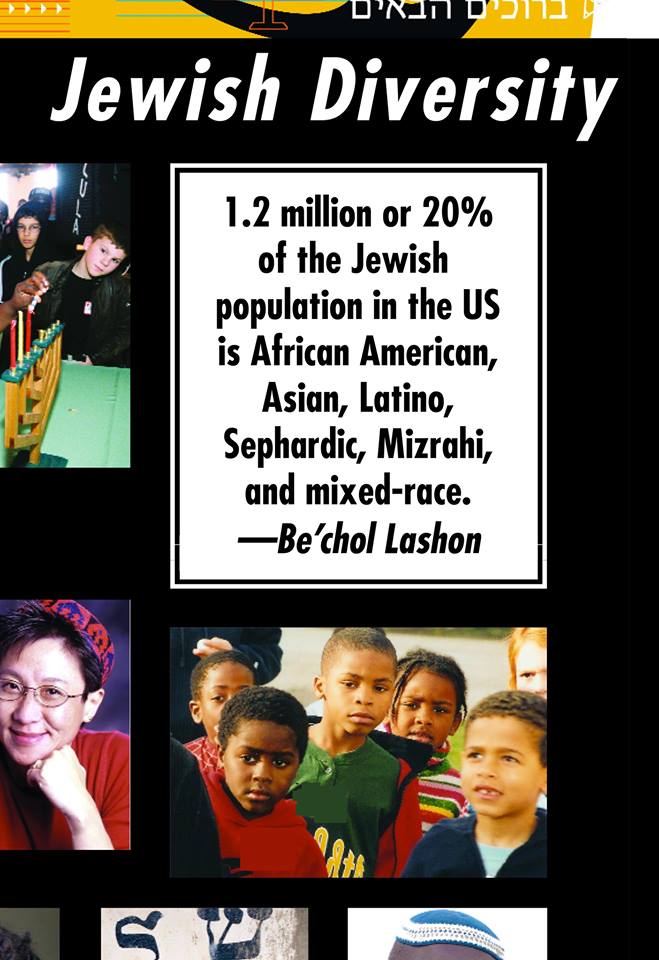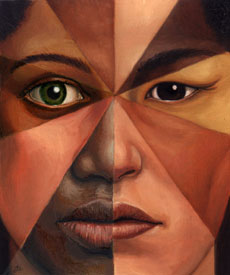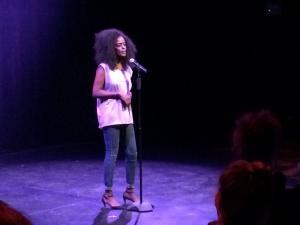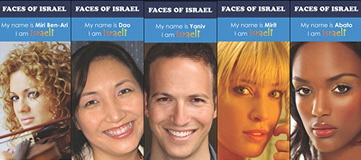Tizku L’Shanim Rabot ~ May You Merit Many Years!
Graphic courtesy of moadesign.com
Pomegranates are traditionally eaten on the second night of Rosh Hashanah. They are a popular choice because Israel is often praised for its pomegranates and because, according to legend, pomegranates contain 613 seeds – one for each of the 613 mitzvot. Another reason for eating pomegranates on Rosh Hashanah has to do with the symbolic hope that our good deeds in the coming year will be as many as the seeds of the fruit. King Solomon is said to have designed his crown based on the “crown” of the pomegranate
Crown of a Pomegranate
Ben Sidran: Life’s a Lesson, Track: B’Rosh Hashana featuring Lynette
L’Shanah Tovah!
NACOEJ Limudiah Student in Rishon LeZion
What is a Shofar?
…In the seventh month, on the first of the month, there shall be a sabbath for you, a remembrance with shofar blasts, a holy convocation. -Leviticus 16:24
How is a Shofar made?
Shofar Shogood!!!
“May it be Your Will That Our Merits Increase Like The Black-Eyed Peas.”
1/2 pound dried black-eyed peas, or 3-4 cups frozen black-eyed peas cooked according to directions on package
5 cups water 1 tablespoon tomato paste
3/4 teaspoon ground coriander
1/2 teaspoon ground cumin
1/2 teaspoon paprika salt and pepper and cayenne pepper
1 tablespoon olive oil
1 large chopped onion
2 tablespoons chopped cilantro
To prepare the peas: pick them over, getting rid of any pebbles and broken or discolored peas. Soak them 8 hours or overnight in water to cover; or put them in a saucepan with a quart of water, bring to boil, boil uncovered 2 minutes, remove from heat, cover and let stand one hour. Drain and rinse the peas. Put them into a medium saucepan and add the water. Bring to a simmer, cover, and cook about 1 1/2 hours (or until tender) over low heat. Drain the peas, reserving 1/4 cup cooking liquid. (I’d reserve more to be on the safe side; this doesn’t seem like enough to me.) Put drained peas into a medium saucepan. Mix the reserved cooking liquid with the tomato paste and add it to the pot. Add the coriander, cumin, paprika, salt, pepper and cayenne pepper. Bring to a simmer and remove from heat. In a heavy skillet, heat the olive oil, add the onion, and saute over medium head, stirring often, about five minutes. (She uses a non-stick skillet; you might need more oil with a regular skillet.) When the onion begins to brown, add a tablespoon of water and saute until the onion is deeply browned. Then add the onion to the pea pot, cover, and gently heat for five minutes. Add half the cilantro. Taste and adjust seasoning. Serve it sprinkled with the other half the cilantro. Beth Greenfeld.
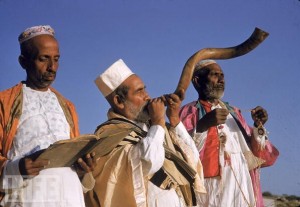 Indian Rabbi in Israel blowing the shofar
Indian Rabbi in Israel blowing the shofar
Photograph courtesy of Life Magazine -Your World in Pictures
May all of us be Listened to & Embraced & Welcomed & Supported in the coming year
Ben Sidran: Life’s A Lesson: Track: Avinu Malkeinu featuring Lynette
“Contrary to the belief of some, the Jews are a multiracial, multi-ethnic group. But it should not be surprising that Judaism’s 4,000-year-old creed spans geography as well as time, or that its message appeals to members of all races, on all continents.” ~Karen Primrack, Author, Under One Canopy
The Jewish People embody a spectacular bouquet of cultural characteristics which enriches our lives immeasurably.
10 Tips Toward Racial & Cultural Sensitivity in the Jewish Community
1 ~ Reach out to other Jews across difference because you will find our commonalities exceed our differences by far.
2 ~ Do not assume that Jewish history and the current Jewish population is comprised most significantly of Jews of European culture ancestry.
3 ~ Consider that within the customs and traditions of the Jewish people, there is a great diversity of language, culture, custom and color. Be willing to reach for and stay connected to the diversity of the Jewish people.
4 ~ Do not assume that because a person has dark skin that they must be a convert. This is not necessarily true or fair to individuals that have been Jewish all of their lives.
5 ~ Learn to value the “inner” Jew in yourself so that you can better appreciate it in others.
6 ~ Get to know the customs and traditions of Jews from the Middle East and North Africa and welcome this knowledge as a necessary component of your Jewish education.
7 ~ If you find a person’s journey around difference to be inspiring, be it their color, background, abilities, culture, traditions, etc., try not to limit your praise of them to their being “inspiring”.Tell them what about them inspires you specifically.
8 ~ Remember that it’s o.k. to be curious, but to become fascinated with a person because of an aspect of their physicality ALONE, is to turn that person into an object in your regard. Make efforts to make your relationships with people who are different than you, more than skin deep.
9 ~ Keep in mind that Jews of Color have a lot to offer the Jewish community, both in experience and perspective and should be welcomed to participate in all levels of Jewish social interaction, including leadership.
10 ~ Remember that denial is not just a river in Egypt (smile), it can also be an obstacle toward finding lasting solutions. When we sit with the things inside us that make us the most uncomfortable, we often find deeper truth and growth on the other side. ~Courtesy of Ayecha http://www.ayecha.org/
Olam Echad! Hashem Echad! Ha’am Echad!
Lev Echad means One Heart in Hebrew and is symbolic of Jewish unity. We are allowed to think and observe differently than one another, but we must always act decently toward each other.
“One Love, One Heart. Let’s get together and feel all right.”
May all of us be listened to and embraced and welcomed and supported.
Jews of Color is a pan-ethnic term that is used to identify Jews whose family origins are originally in African, Asian or Latin-American countries. Jews of Color may identify as Black, Latino/a, Asian-American or of mixed heritage such as biracial or multi-racial.
Due to several factors, Mizrachi and Sephardi Jews from North African and Arab lands vary in whether or not they self-identify as “Jews of Color.”
“The Jewish experience is built upon foundations of diversity as old as the Jewish people, a reality that may be lost to many Jews who tend to think of other Jews as being only like themselves. The historical home of the Jews lies at the geographic crossroads of Africa, Asia, and Europe. Jews are an amalgam of many peoples and Jewish origins include a multitude of languages, nations, tribes, and skin colors.” ~The History of Jewish Diversity/ Be’chol Lashon
The first show of its kind, Jews of Color explores the cultural and ethnic diversity of the Jewish community, sharing the unique perspectives of Jews from African-American, Asian, Hispanic and other non-”white” backgrounds. Defying our collective assumptions about what it means to be a Jew, and shedding light on perspectives that are too often ignored by the broader Jewish community, Jews of Color is not to be missed.
Featuring: host Joel Sanchez (Jewish Board of Family and Children’s Services), Aliza Hausman (Blogger, “Memoirs of a Jewminicana”), Akira Ohiso (Author, “Survivor”), Yitz Jordan a.k.a. Y-Love (Rapper, Writer, Activist), and Yavilah McCoy (Jewish educator, Diversity Practitioner, and Founder of Ayecha Jewish Diversity Resources).
“The most powerful thing I want to happen in the Jewish community is that we gain more space of love for one another…”~Yavilah McCoy
At The Kaleidoscope Project, Vanessa Hidary: Kaleidoscope Founder, Producer, Director and Kendell Pinkney: Associate Producer, are driven by their desire to empower fellow Jews of diverse racial, ethnic, and interfaith backgrounds by giving them the space and tools to tell their own stories. KALEIDOSCOPE. Vivid Reflections – Boldly Diverse – Distinctly Jewish.
KALEIDOSCOPE is a narrative-arts driven initiative that was sparked by a desire to highlight the stories of Jews of diverse racial and ethnic backgrounds, observance levels, and interfaith experiences. Given the increasing diversity of the greater Jewish community, we feel that highlighting the complex, personal stories of diverse Jewish voices through “edu-tainment” is critically important. As we look to expand our initiative (i.e., developing a KALEIDOSCOPE diversity curriculum for Jewish communities, expanding our presence online, broadening our impact within New York and the northeast) we seek to collaborate with partner organizations in order to create a more complete picture of the diversity that already exists within klal yisrael.
Stop being so Ashkenormative!
by Larry Yudelson, The Times of Israel, December 10, 2015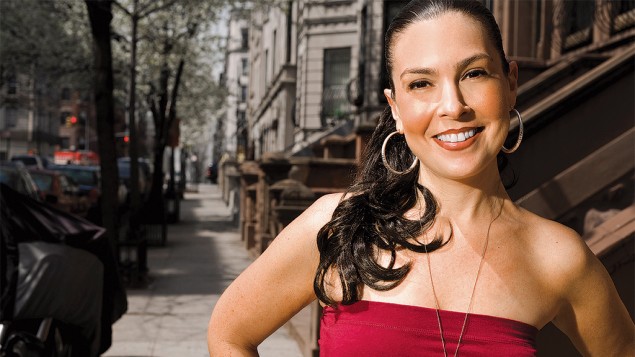
Woody Allen had it easy.
A Jewish mother, a slice of herring, a dab of gefilte fish jelly, a shmear of Martin Buber, and a put-down of mayonnaise on white bread for a punch line. Everyone knew what the Jewish menu and the Jewish joke looked like, 50 years ago.
It was never that simple, of course. New York mythology aside, not all Jews left Russia between 1880 and 1923. And not all Jews spoke Yiddish. But ask around in Syrian communities in New York City and you’ll hear stories of grandparents from Damascus and Aleppo whose Jewishness met with stares of disbelief. “How could you be Jewish if you don’t speak Jewish?” that is, Yiddish, they were asked by their Ashkenazic neighbors.
That was then. Now you can dismiss your Litvak zeidie’s ignorant arrogance with a high-falutin’ put-down: Oh, he’s being Ashkenormative again. A lot of consciousness has been raised in the past decade and half on how much the Jewish community constricted itself with unspoken, unquestioned assumptions about Jews looking a certain way, acting a certain way, eating a certain away. In a multicultural age, it began to make sense that there are lots of Jewish cultures.
And at the forefront of that consciousness raising, holding the mic and posting spoken-word videos to YouTube, was Vanessa Hidary, the self-styled Hebrew Mamita, who will perform at Temple Emeth in Teaneck this Shabbat afternoon.
Ms. Hidary grew up in a Jewishly diverse family – her mother from Syrian stock, her father Ashkenazic. Her grandmother had come from Aleppo, where she never would have heard the term “gefilte fish” – which, after all, is simply how you say “stuffed fish” in Yiddish.
She grew up not in the Lower East Side, or in Jewish Brooklyn, but in Manhattan’s Upper West Side, at 88th and Columbus. She’s a bit vague about exactly when, but has described it as during the “hip-hop era.” She went to a local public school and her best friend was a Puerto Rican whose parents owned the corner bodega. Ms. Hidary discovered what it was like to be seen sometimes as Jewish and sometimes as not. She didn’t always like what she heard people say about Jews when they thought she wasn’t one.
She graduated from the LaGuardia High School of the Arts, studied at Hunter College, and earned an M.F.A. in acting.
When it was time to put on a performing persona, to venture to the East Village performance spaces and even the famed Nuyorican Poets Cafe, she dubbed herself the Hebrew Mamita because, she said, “I wanted to represent my neighborhood and how I grew up. I grew up with a very strong Latino culture around me. Mamita is a term of endearment.”
The performance she will bring to Teaneck centers on “modern Jewish identity and race relations, my experience growing up- plus a q-and-a afterward.” Her career has taken her well past New Jersey; she has performed from Alabama to Jerusalem.
“I do sessions that deal with the basics of what does Jewish look like to you. I talk about Jewish living outside the box,” she said.
“When I was growing up, people didn’t know that much about Sephardic Jews, about Jews of different cultures and races. I think the Internet has changed that a lot. They’re starting to have a bigger presence, and the Jewish community is changing. The community is becoming more open to having different faces.”
She can’t quite believe that it has been 15 years since she first worked with Be’chol Lashon, – Hebrew for “in every tongue” – a then-brand-new organization in San Francisco, which imagines “a new global Judaism that transcends differences in geography, ethnicity, class, race, ritual practice, and beliefs.” One of Be’chol Lashon’s premiere activities is an overnight summer camp for racially and ethnically diverse Jewish children.
Locally, Be’chol Lashon’s mission is echoed by Temple Emeth’s Viewpoints committee, which is sponsoring Ms. Hidary. The committee was “formed to celebrate the diversity of the Jewish community and includes programs that highlight the interfaith, interracial, and LGBT communities.”
Ms. Hidary promises that her performance will bring “a lot of humor mixed into poignant things to think about.”
Her latest project has placed her in the director’s chair. It’s a show called Kaleidoscope. She brought together a group of a dozen “ethnically diverse Jews, Jews of color, Sephardic Jews, and had them write their experiences growing up.”
Kaleidoscope’s creation and some performances were underwritten by grants from New York’s UJA-Federation and the 14th Street Y. Now Ms. Hidary is applying for grants to “make that show happen again and attach a curriculum to that.”
Originally posted HERE.
The remarkable story of a black African from a royal lineage in Swaziland who was raised a Christian, converted to Judaism and became a Haredi Litvish Rabbi in Israel. It begins with Rabbi Natan Gamedze’s first visit home in 16 years and traces back his extraordinary spiritual journey from Swaziland to Israel. By following Rabbi Gamedze’s journey to Judaism, this story provides an extraordinary insight into orthodox Jewish thinking from a completely different background. Along the way it gently explores race issues, pre and post apartheid.
Additional information:
http://www.rabbigamedze.com/
https://en.wikipedia.org/wiki/Natan_Gamedze
Who Counts? Race and the Jewish Future
Racism in the Jewish Community: The Uncomfortable Truth via ELItalks
David Baliaba, a prominent member of the Jewish community in Cameroon, performing Hatikvah. David composes music for the prayer services in Cameroon, and is a professional musician and performer.
From Canada to the Judean Hills, from Christianity to Judaism
Azriel Dror from Canada converted to Judaism from Christianity and made aliyah because Israel is “where every Jew needs to be.”
Arutz Sheva continues its series of interviews with some of the 221 olim who arrived in Israel on a Nefesh B’Nefesh flight this week.
One of the new olim on the flight was Azriel Dror, 35, who converted to Judaism from Christianity. Dror, along with his wife and five children, made aliyah from Thornhill, Ontario, Canada (a suburb of Toronto) to Susya, a religious community located in the southern Judean Hills area.
“Israel has always been in my heart and in my mind,” Dror said as the flight made its way to Tel Aviv. “The Torah says that Israel is where we should be. You see prophecy happening all the time, and Hashem has put in my heart and in my wife’s heart to go back to the Land of Israel, where every Jew needs to be.”
Dror recalled how he surprised his son, who attended yeshiva in Israel this past year, by arriving in Israel for a visit. The two toured the country from the south to the north and “I fell in love. My soul just came alive. I said, ‘This is where I need to be. This is where I need to live. Every Jew needs to live there.’”
“I still have to pinch myself that I’m here. Hashem, you made this possible. I thank G-d for his miracles. I thank G-d for catching this flight, and I thank G-d for when I land, that I can kiss the ground,” he said.
Originally posted HERE
A Kaleidoscope Of Jewish Identity By Sharon Anstey
Cuban, Moroccan, Turkish, Libyan, Israeli, Puerto Rican, British and American influences swirl through the very Jewish stories presented in Vanessa Hidary’s “Kaleidoscope” at the 14th St Y.
Hidary, the actress, solo performer, poet and director known as the “Hebrew Mamita,” and her cast of 4 men and 8 women explore what it means to be Jewish through multiple, shifting lenses. Their compelling monologues in English with notes of French, Hebrew, English, Spanish, Ladino, Amharic and Turkish, highlight pride and joy as well as discomfort with inequalities and, for many, the bittersweet moments when grandparents and grandchildren cannot communicate easily.
Avi Amon — white, male, Jewish, Turkish, Sephardi, American — articulates the fundamental dilemma: How can we check any one box on a survey form? No one box can capture all that we are. We are forced to “shape shift.”
Raised an Episcopalian in the Bronx, Malaika Martin converted to Judaism and lived in Israel for many years. She thinks she was the only black in Beersheva in the 90s and later reigned as the “Black Queen Bee” of Tel Aviv, dispatching any competitors with contempt — to Jerusalem.
Another performer, who goes by the name Ahuva, grew up in the Ethiopian community in Ashdod and recalls that the Ethiopians walked at night and hid by day during their long journey to Israel. Her pride in Israel and having served in the IDF is evident. At the same time, her fury at the derogatory “Cushi” being hurled at members of her community is palpable.
A common thread among these monologues was “don’t tell me how to be Jewish.” As Corey Hennig who closes the evening said, as a Black and as a Jew, “the nice Jewish boy with a little more flavor,” he feels caught in the crossfire too often.
On a personal note, I witnessed a close friend grapple with this question for a long time. She was a black South African, drawn strongly to Judaism. Rabbis here in New York were willing to convert her but counseled against it as she was planning to return to South Africa — they felt that her Jewishness might be hard for her family there to digest. She lived as a Jew but died a Christian.
“Kaleidoscope” opened on Wednesday evening to an enthusiastic reception and the final performance at the 14th St Y is July 19th.
Originally published HERE.
“Olam echad, Hashem echad, ha’am echad” (One world, one God, one people)
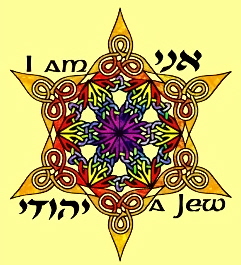 “Ani Yehudi”, I am a Jew.
“Ani Yehudi”, I am a Jew.
Artwork & products by Yosef’s Dreams/ Zazzle
JEWS AROUND THE WORLD by Ruth Brin
Who Are These Jews?
There were women who sat in the market
selling beets and cabbages so their men could study:
They were Jews.
There were men of Yemen, great swordsmen,
guards of the king: they were Jews.
There are dark women of India, wearing saris,
Black farmers from Ethiopia, Children with slanted eyes:
All Jews.
There are dressmakers and sculptors, thieves
and philanthropists, scholars and nurses,
beggars and generals.
There are women who follow every rule of Kashrut and
men who know none of the rules, yet all of us are Jews.
Though we are not alike in mind or body,
somewhere in the depths of our souls
we know we are the children of one people.
We share history, a hope, and some prayers:
We speak many languages:
We have heard one Voice:
All of us stood together at Sinai
When our past and our future
Exploded in thunder and flame before us.
